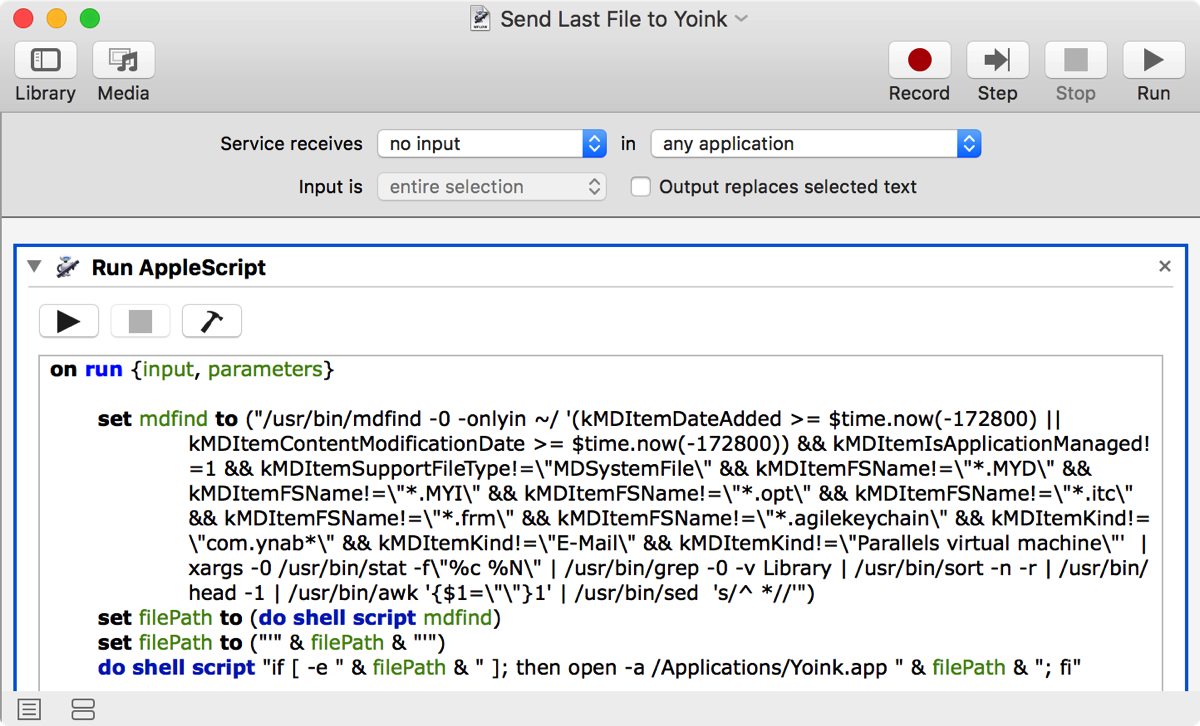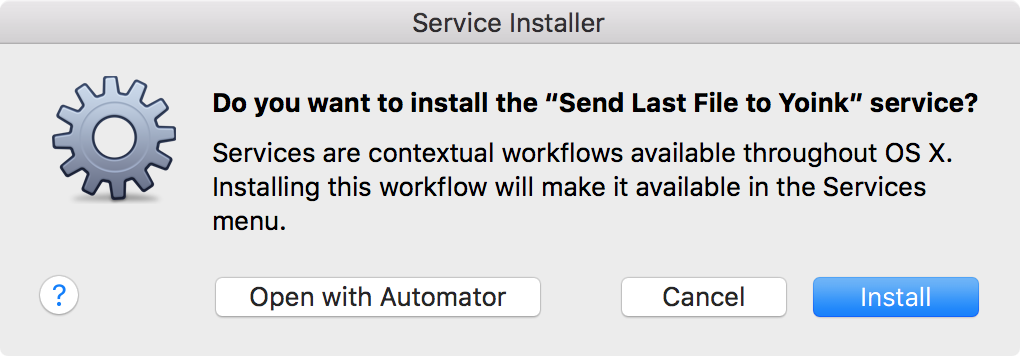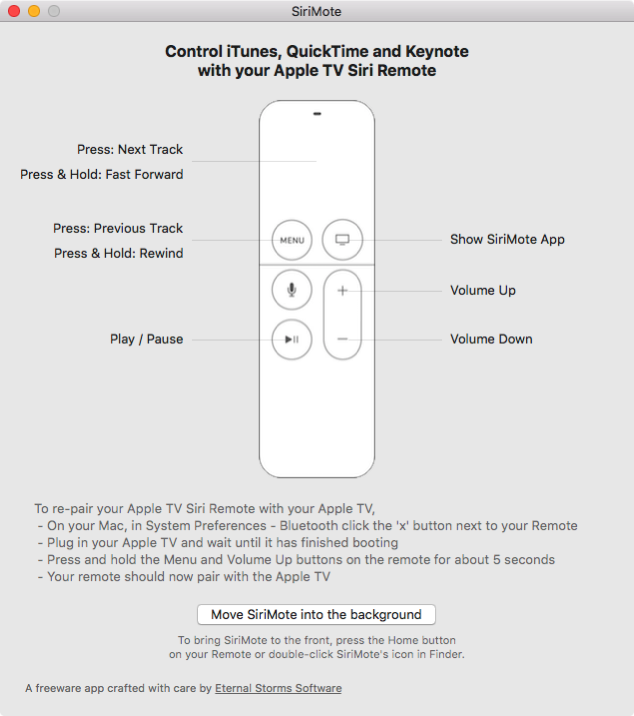From January 21st to January 28th 2016, Apple ran a promotion called Get Productive on its App Stores. Yoink, my app to improve and simplify drag and drop on the Mac, participated.
This is my experience with the promo.
Yoink Automator Workflow: Add Last Saved File to Yoink
Yoink users have been automating adding various files to Yoink via Automator Workflows for a while now – from adding mail attachments or screenshots, to adding files from the Terminal.
Douglas (@douglasjsellers on twitter) today adds to this list of wonderful workflows an Automator Workflow that lets you quickly add files that you created/saved recently.
Here’s what he says about it:
I cooked up my Automator Service that lets you send the last file that you saved (from any application) to Yoink.
When bound to a key combination this allows you to do things like “Export to Web” from Adobe Photoshop, hit the key combo and then the newly created png is on Yoink.
Or say you’re editing a file in Emacs and you want to add it as an email attachment. You save the file, hit the key combo and the file will then be in Yoink for easy dragging into your email.
I also use it heavily to get recently downloaded files from chrome to Yoink.
The Automator Workflow

The main part of this workflow consists of a complex shell script that finds files that were recently saved, excluding files that are less likely to be needed in Yoink – obviously, this is something everybody needs to configure for themselves, but since this is an Automator Workflow, it is easily done.
Download
The Automator Workflow is available for download here (~130 KB).
My thanks to Douglas for his awesome work.
Installation & Keyboard Shortcut Setup
To install this workflow, download it from above, unzip it, double-click it and click on Install when this dialog comes up:
 Click on Install if you’d like to install the service, click on Open with Automator if you’d like to make changes
Click on Install if you’d like to install the service, click on Open with Automator if you’d like to make changes
To create a keyboard shortcut for this service:
- Launch System Preferences
- Click on Keyboard -> Shortcuts -> Services
- Find ’Send Last File to Yoink’ in the list, under ‘General’
- Click on ‘add shortcut’ and enter the shortcut you’d like to use to activate the service
If you have any feedback regarding this workflow or if you’d like to share a workflow of your own, please be sure to get in touch either via twitter or eMail. Thank you and enjoy 🙂
SiriMote – Control your Mac with your Apple TV Siri Remote
![]()
Introducing: SiriMote
Apart from pairing the Remote with your Mac to test Apple TV apps running in Xcode’s Simulator, the Remote is not of much use on the Mac.
That’s where SiriMote comes into play: It enables you to use the Apple TV Siri Remote with all sorts of applications.
Using SiriMote
SiriMote requires you to pair your Apple TV Siri Remote with your Mac.
Once finished with pairing (detailed instructions are shown in the app), you’re ready to go.
Aside from controlling your Mac’s system volume with the Remote, you can now use it to control:

iTunes
Play/Pause, Fast Forward, Rewind, Next Track, Previous Track
Keynote
Next Slide, Previous Slide

QuickTime
Play/Pause, Fast Forward, Rewind
VLC
Play/Pause, Fast Forward, Rewind, Next Track, Previous Track
… as well as many other applications. How? Keep reading 😉
Pricing and Availability
SiriMote is a free download from my website. OS X El Capitan 10.11 and a Mac with Bluetooth 4.0 is required.
I decided to make it a free app as I’m uncertain as to how long the app will be needed.
I suspect at some point, Apple might actually implement this functionality right into the OS.
If you like the app, though, I’d love for you to take a look at my other applications – thank you 🙂
How it Works

SiriMote translates remote buttons into media key presses of your Mac’s keyboard. For example, when you press Volume Up on the Siri Remote, the app will translate that into the Volume Up key on your keyboard and send it to the system.
Likewise, it translates the Play/Pause button on the Remote to the Play/Pause media key on your Mac’s keyboard and sends that to the system.
That enables your Remote to interact with any application that hooks into the media key event system.
The Mac App Store and the OS X Sandbox
SiriMote is not available from the Mac App Store, as it uses an API that does not work in the OS X sandbox to send media key events (CGEventPost).
As the Mac App Store requires the app to run in the sandbox environment, I couldn’t submit it. Either way, you will stay up-to-date as it uses Sparkle to deliver app-updates easily and quickly.
Links
SiriMote Website: http://eternalstorms.at/sirimote
SiriMote Direct Download: http://bit.ly/sirimotezip
SiriMote on ProductHunt: https://www.producthunt.com/tech/sirimote
Black Friday Sale 2015
I’m participating in TwoDollarTuesday’s Black Friday sale with some of my apps (MacStories has great coverage of over 200 deals as well) :
![]() Yoink
Yoink
Simplify and improve drag and drop
40% off – Mac App Store; Website
 ScreenFloat
ScreenFloat
Create floating screenshots to keep references to anything visible on your screen
28% off – Mac App Store; Website
![]() Transloader
Transloader
start downloads on your Mac remotely from your iPhone or iPad
30% off – Mac App Store; Website
![]() Glimpses
Glimpses
turn your photos and music into stunning still motion videos
40% off – Mac App Store; Website
I hope you’ve had a great Thanks Giving and are enjoying the Black Friday Sale that’s going on 🙂
